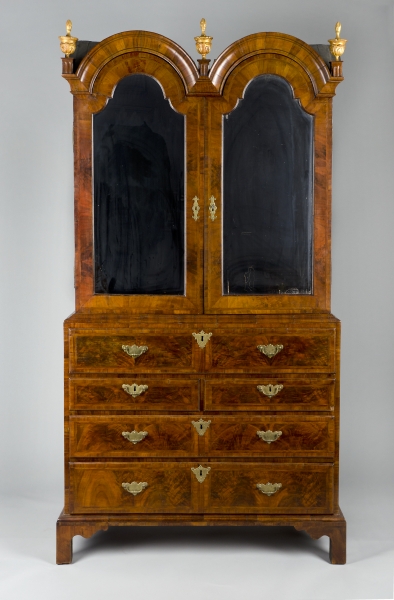· 2 ·
“Newest Fashion” Case Furniture in Boston, 1690–1725: A Transatlantic View
EDWARD S. COOKE JR.
On February 20, 1719/20, the pious Boston judge Samuel Sewall wrote to his cousin Samuel Storke, a merchant in London, to secure a variety of furnishings for his daughter Judith, who later in 1720 moved into a new house on Sudbury Street with her husband, the Reverend William Cooper of the Brattle Street Church. This remarkable document provides insight into consumption priorities, domestic furnishing practices, and self-presentation attitudes of the period. Sewall’s extensive list includes items that were not widely produced in Massachusetts, such as wool and chintz textiles, brass cooking and lighting implements, and looking glasses, alongside cane chairs and pewter, which he could have easily purchased from Boston makers or merchants. The specificity of the forms, materials, and qualities, such as the “newest fashion,” demonstrates a closely connected transatlantic world and warrants transcription:
- Curtains and Vallens for a Bed, with Counterpane, Head-Cloth and Tester, of good yellow waterd worsted camlet (Send also of the same Camlet and Trimming, as may be enough to make Cushions for the Chamber Chairs), with Trimming, well made: and Bases, if it be the fashion;
- A good fine large Chintz Quilt well made;
- A True Looking Glass of Black Walnut Frame of the newest Fashion (if the Fashion be good), as good as can be bought for five or six pounds;
- A second Looking Glass as good as can be bought for four or Five Pounds, same kind of frame;
- A Duzzen of good black Walnut Chairs, fine Cane, with a Couch.
- A Duzzen of Cane Chairs of a different figure, and a great Chair, for a Chamber: all black Walnut;
- One Bell-mettal Skillet of two Quarts: one ditto one Quart;
- One good large Warming Pan bottom and Cover fit for an Iron handle;
- Four pair of strong Iron Dogs with Brass heads, about five or six shillings a pair;
- A Brass Hearth for a Chamber, with Dogs, Shovel, Tongs and Fender of the newest Fashion (the Fire is to ly upon Iron);
- A strong Brass Mortar, that will hold about a Quart, with a Pestle;
- Two pair of large Brass sliding Candlesticks, about four shillings a pair;
- Two pair of large Brass Candlesticks, not sliding, of the newest Fashion, about five or six shillings a pair;
- Four Brass Snuffers, with stands;
- Six small strong Brass Chafing-dishes, about four Shillings a-piece;
- One Brass basting Ladle: one larger Brass Ladle;
- One pair of Chamber Bellows with Brass Noses;
- One small Hair Broom sutable to the Bellows;
- One Duzzen of large hard-mettal Pewter Plates, new Fashion weighing about fourteen pounds;
- One duzzen hard-mettal Pewter Porringers;
- Four Duzzen of small Glass Salt-cellars, of white glass, Smooth, not wrought, and without a foot . . .1
In drawing up this list to furnish his daughter’s home, Sewall concentrated on her bedchamber, a room that also served as a private parlor.2 His focus on the intimate chamber rather than the public parlor suggests that his motivation may have been to remind her of her family of origin, not to package her social profile for the general visitor.3
Both the context and the content of the letter provide an extraordinary view into the changing cultural world of Boston during the late seventeenth and early eighteenth centuries, a period bracketed on one end by the increased scrutiny of the Lords of Trade into Massachusetts political and economic affairs during the 1670s and 1680s and on the other by the commercial growth of the port after the War of Spanish Succession in 1713. A member of the conservative Third Church and ardent opponent of royal officials meddling in Massachusetts affairs, Sewall was a bit of a cultural curmudgeon who resisted the temptations of fashion. His stance was clear in his steady distaste for the falseness of those gentlemen who wore wigs and his insistence on dressing in the dated hood. During the same year that he wrote to Storke, Colonel Penn Townsend and the widow Winthrop, whom he was courting, admonished him about his conservative look and encouraged him to acquire a wig.4
The context of Sewall’s order bespeaks the changing alliances and orientation of Boston as it adjusted to a hybrid charter that allowed some self-rule in the Assembly but still imposed a royally appointed governor and royal officials to oversee commercial activities in the harbor. The order’s contents also offer insight into the close ties between English production, London trade, colonial production, and Boston consumption. During the late 1600s and early 1700s, Sewall had often written to cousins in London asking them to send along household textiles on a case-by-case basis; his order of 1719/20, the most substantial to date, reveals his opening up to the world of Atlantic consumption.5 In furnishing his daughter’s bedchamber according to her station, Sewall sought a fully hung bedstead replete with the tester and valances along the top perimeter, a head cloth and curtains hanging from the tester that permitted the entire bed to be closed off, and possibly a base along the bottom edge. Such a bedstead, the most expensive piece of furniture in the house, would have not only provided warmth and privacy in the mixed-use and drafty rooms of the period but also served as a clear marker of status. His request for a specific sort of worsted wool, whose watered finish resembled moiré silk, and matching trim, plus more of the same for the coordination of cane chairs for the room, testifies to an interest in showing prestige through his access to London goods, knowledge of fashion, and ability to coordinate a suite of hangings.6 Sewall also chose a colorful textile as the cover for the fully hung bedstead. The “Chintz Quilt well-made” signifies an awareness of the links between London fashion and the larger world of global commerce. A form of painted cotton, chintz was produced on the Coromandel Coast of India, just above Madras, and it was all the rage in London in the late seventeenth and early eighteenth centuries.7
Similarly, Sewall’s interest in looking glasses mixed function and status. Used not so much for self-fashioning but to reflect and amplify the limited light in early eighteenth-century interiors, looking glasses became essential furnishings for those who increasingly entertained in their homes rather than in public locations or taverns like the Green Dragon. From 1714 to 1720, Sewall frequently held evening meetings or dinners in his home. His desire to increase the effects of artificial light is seen in his request for two pairs of brass candlesticks as well as other reflective brass objects for the fireplace, including the hearth, fender, and fire dogs.8 These brass objects also suggest a certain rootedness and permanence, echoed in the substantial fireplaces and brick chimneys of Boston housing, which contrasted with the fragility of the ceramic cookware; they differed, too, from the smaller chimneys and jambless fireplaces typical of contemporary kitchens of Dutch New York or the rudimentary fireplace equipment around the wattle-and-daub chimneys of many Chesapeake houses of this period. Such emphasis on the durable and substantial provides insight into the settlement mentality of New Englanders who sought to will their presence upon the land.9
As for the cane chairs and pewter wares, Sewall had a variety of choices: he could obtain examples from local craftsmen, including chairmakers Samuel Mattocks or Edmond Perkins or pewterers Edmund or John Dolbeare, he could purchase English examples sold by Boston merchants like Ambrose Vincent or Hindman & Lewis, or he could rely on his own family contacts in London.10 The decision to order from England underscores Sewall’s keen interest in items that were of “the fashion” and “lately from London.” Reading through issues of the Boston News-Letter from this period reveals a change in descriptors for furnishings. Whereas the term good was used in the 1700s and connoted well-made and decent quality, the term new fashion began to appear in 1713, just as trade picked up after the War of Spanish Succession. In 1715, this term was joined by the phrase lately from London to signify the most desirable sorts of household items. Sewall had developed a discerning eye and wanted to control the types of goods he purchased, just as he had instructed the wife of his cousin Daniel Allen to pick out the textiles his family needed in the late 1680s.11 By the 1710s, he was more concerned with the concept of fashion rather than with suitability.
The element of choice is also apparent in the types of wares absent from the list. Most striking is the lack of ceramics or silver. The former is rarely mentioned in Sewall’s diary, suggesting that he took little notice of it, did not enjoy a wide variety of options, and considered it a medium for quotidian objects. He does not seem to be unique in this regard. Throughout the early eighteenth century, the Boston News-Letter contains little mention of specific ceramic types or forms.12 Archaeological evidence from sites occupied at this time includes imported or locally made lead-glazed earthenware used for everyday food processing and drinking; imported tin-glazed earthenware was reserved for ointment pots, standing salts, tableware, and other more specialized forms.13 Silver appears regularly in Sewall’s diary, as gifts or as stolen goods, as do the names of Boston silversmiths Edward Winslow and William Cowell. This attention is befitting, for Sewall’s father-in-law was the prominent Boston silversmith John Hull. Surviving silver in the Boston area suggests that the many Boston silversmiths satisfied most local demand.14
Also missing from Sewall’s letter is any mention of fashionable case furniture such as the recently introduced high chest of drawers or dressing table. These would have stored the increased quantity and quality of textiles and clothing that supported the newer lifestyles of transatlantic Bostonians. What might have been their options? Instead of ordering directly from London, they could have purchased recently imported furniture, from the “new Fashioned Chests of Drawers Walnut Tree of the best Workmanship” at Mr. Bannister’s Warehouse to “Desks and Book Cases with Glass Doors” from William Hutchinson’s warehouse.15 Another possibility was vendues held at Guttridge’s Coffee House or the Crown Coffee House, although whether these offerings of walnut case furniture were imported or locally made is difficult to ascertain.16 Among the craftsmen active in Boston in the 1710s were immigrant cabinetmakers John Brocas, William Howell, and William Price, who competed with local artisans such as John Maverick and George Thomas.17 Howell, who rented his shop space from Sewall, undertook house renovations for the latter, taking down a closet on August 4, 1714.18 Whether Sewall purchased work directly from the shops or at the public sales is unclear; indeed, some of the shops may have relied on the vendues for ease of distribution.
The varied options for case furniture prompt a closer look at the cabinetmaking trade in Boston at the turn of the eighteenth century. Of course, no modern scholar venturing into the world of Boston furniture in the 1690–1725 period does so without acknowledging the pioneering and foundational work of Benno M. Forman. Most significantly, Forman established a roster of documented craftsmen working at that time, charted the transition from joiner to cabinetmaker, and developed a well-argued chronology for cane and leather chairs in Boston.19 His impressive work on chairs was particularly convincing, weighing as he did the documentary evidence, turning vocabularies, wood species, histories of ownership, and recognizable workmanship to develop a clear picture of the development of forms.
Forman was unable to devote the same scholarly attention to case furniture. In a posthumously published article, he focused more on the second half of the seventeenth century and concluded that the joiner’s chest of drawers remained viable into the eighteenth century.20 According to his research, craftsmen accommodated new styles without discarding their technical base. They were accustomed to riving carcass stock, constructing forms with mortise-and-tenoned panel construction, fitting side-hung drawers with runners affixed to the frame and grooves cut into the drawer sides, and using plentiful molded decoration; they could, therefore, adapt to new functional and formal demands by using more sawn pine, emphasizing half-round moldings, keeping the facade symmetrical, and narrowing the stiles. At the heart of his argument was the importance of the Mason-Messinger shop, which introduced dovetailed drawers and London joinery to mid-seventeenth-century Boston.
Forman was also unable to fully investigate the introduction of dovetailed board carcass construction in late seventeenth- and early eighteenth-century Boston. This failure was due to the time he spent working out the chronology of Boston cane chairs stamped with an I on the rear leg, the dearth of scholarship on comparative British work, and his own interest in matching the names of makers to surviving furniture or pivotal moments. His reliance on tentative phrasing (“it seems likely that,” “it appears probable that”) weakened some of his attributions and historical assertions. I refer to this tendency as the “Brocas effect,” after the immigrant cabinetmaker John Brocas, whom Forman believed was most responsible for the establishment of the new style in Boston.
To uncouple name attribution from furniture pieces might be more profitable. Let’s draw instead on the work on English furniture by Adam Bowett to address shop tendencies in Boston and examine how they fit within the city’s cultural and economic history.21 In many ways, the joinerly chests of drawers identified by Forman and Robert F. Trent represent a local response to new formal options made possible in the late 1680s and 1690s by quickened contact between Boston and London during negotiations for a new charter and the insertion of a royal governor and admiralty officials. The makers of these chests adapted the newer configuration of stacked drawers, with access oriented toward the vertical elevation rather than the horizontal plan, substituted a broad fixed top for a hinged top, and set the case on turned feet. Despite the change in orientation, makers still conceived of the carcass as a series of vertical stiles and horizontal rails with panels filling the space; they also continued to rely on side-hung drawers and used paint to ornament the surface (fig. 1). Most drawers remained heavy, the thick riven oak boards rabbeted and nailed together (fig. 2). Joiners did not attempt the dovetailed-board carcass construction, lightweight bottom-sliding drawers, or figured and decorative veneers characteristic of new fashions.
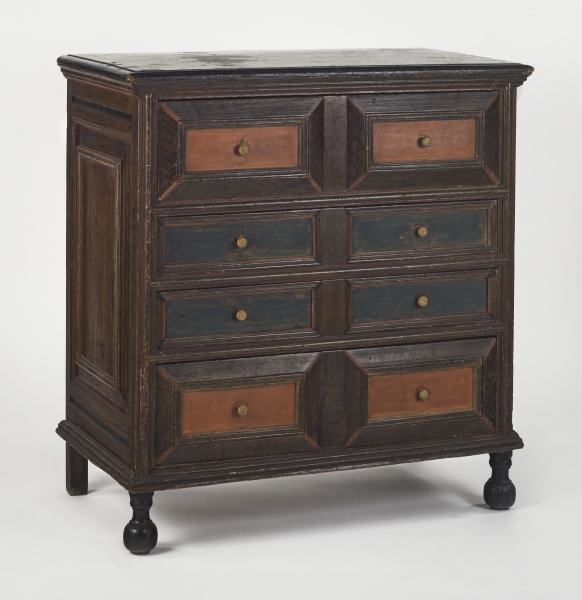
FIG. 1. Chest of drawers, Boston area, 1700–1715. Red oak, yellow pine; h 42⅝, w 40¾, d 22. Winterthur Museum; Museum purchase (1956.0010.003).
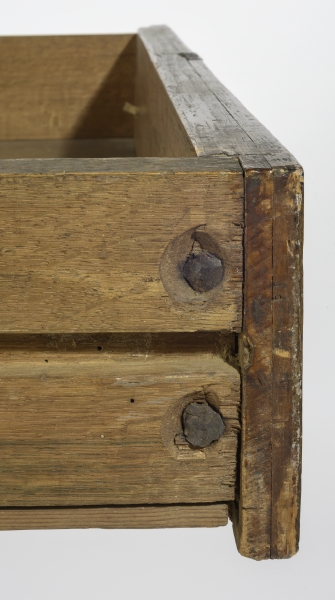
FIG. 2. Nailed drawer construction of chest of drawers in fig. 1.
The storage form introduced at the end of the seventeenth century, and which became the dominant form for Boston and New England for much of the eighteenth, was the high chest of drawers or case of drawers, period terms for what is today often referred to as a highboy. In England, the popularity of the high chest was relatively brief, giving way by the 1730s to the chest-on-chest and clothespress. In the middle colonies and the south, the chest-on-chest emerged as the favored form beginning in the 1740s. The longevity of the high chest form in New England warrants the attempt to establish its initial appearance and explain its attraction in Boston. Early examples of Boston case furniture help lay out a story that unfolds from the 1690s into the 1720s. A look at two shops exposes the introduction of new technology in the making of case furniture and reveals waves of English influence that parallel Forman’s separation of cane chairs and can be tied to immigration patterns and local economic conditions.22
One early shop conceived of a high chest in a completely different way: as a storage unit comprising individualized compartments set on top of a stand that facilitated access (fig. 3, p.34). This form, which evolved from the cabinet on stand, began to be produced in England in the 1680s and 1690s. In this Boston example, the upper section consists of a lightweight box formed by thin white pine top and bottom planks half-blind dovetailed to walnut sides, with drawer dividers and vertical backboards stiffening the open box. This cabinet sits on a stand made of another half-blind dovetailed box frame set atop six turned legs. The carcass is constructed entirely of sawn white pine and black walnut planks; no riven oak was used. The drawers feature through dovetailing of the fronts, squared edge and flush tops for the sides, and bottoms formed by several boards whose grain runs perpendicular to the fronts; the bottoms are nailed into a rabbet along the front and to the bottom of the back, with strips applied to the bottom. All these details relate to Adam Bowett’s first phase of English cabinetwork, dating from 1670 to 1700 (figs. 4, 5).23 The same drawer-bottom construction continued into the early 1700s, but the extensive use of half-round moldings along the front facade and the herringbone pattern around the burl-veneered drawer fronts conform to Bowett’s second-phase case construction, indicating a date around 1700.24
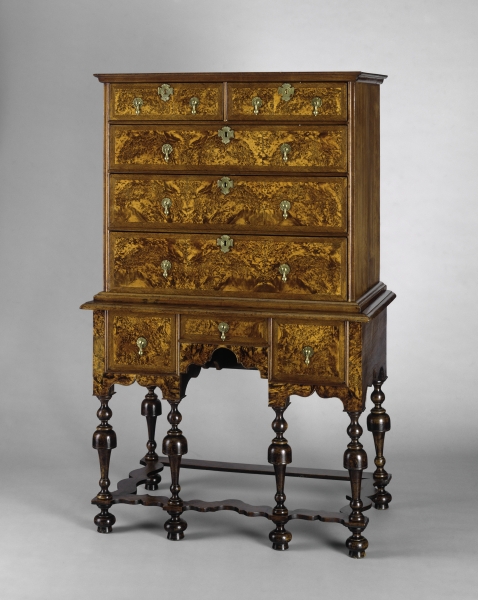
FIG. 3. High chest of drawers, Boston, 1690–1700. Black walnut, burl maple, curly maple, white pine; h 61½, w 39¼, d 22⅜. Metropolitan Museum of Art; Gift of Mrs. Russell Sage, 1909 (10.125.704).
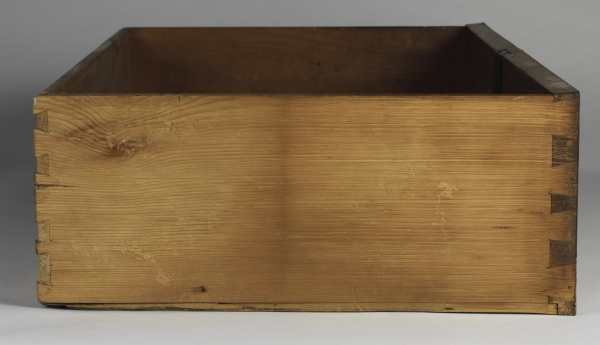
FIG. 4. Dovetailed drawer construction of high chest in fig. 3.
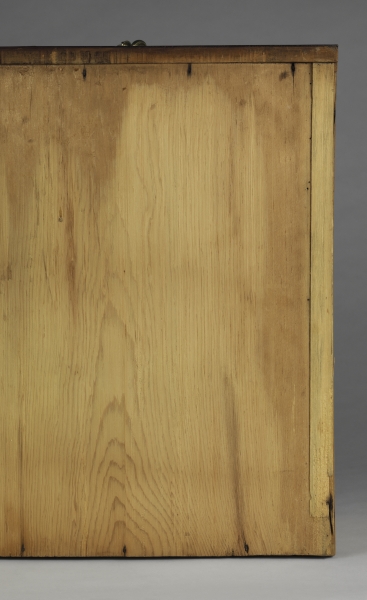
FIG. 5. Drawer bottom of high chest in fig. 3, showing pine boards set perpendicular to the drawer front. The bottom is nailed to the rabbeted edge of the drawer front and flush edges of the sides and back. Runners cover the nails securing the bottom to the sides.
Several qualities of this high chest suggest an accomplished craftsman trained in sophisticated techniques who used the best possible local materials. The most complex construction methods are seen in the lower case: the pine backboard and the flanking veneered front skirts are half-blind dovetailed to the solid walnut sides, but behind the veneer, the front skirt is not a continuous board. It consists of three separate pieces connected by vertical dividers. The flanking skirt elements and the central skirt are through dovetailed to the vertical drawer dividers. These dividers, which are shaped along the lower edge to match the cupid’s bow of the sides, are secured with dovetails to two pieces along the front and set into a vertical groove along the inside of the backboard (fig. 6). These dividers are through tenoned at the top and wedged into the groove along the bottom. The difficulty of laying out, cutting, and assembling this series of four joints underscores the technical proficiency of the shop.
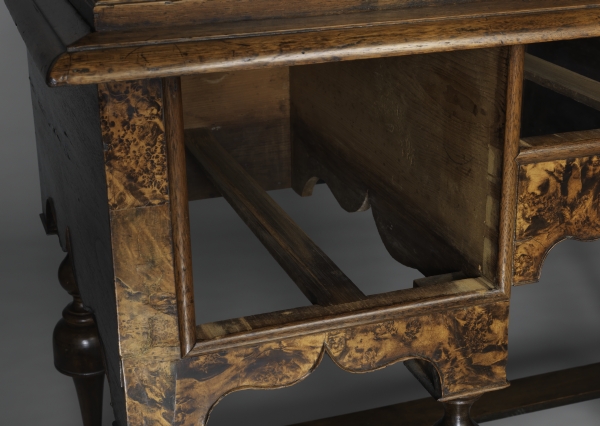
FIG. 6. Vertical divider in lower section of high chest in fig. 3.
The craftsmen’s expertise is also borne out by the coped veneer on the lapped front corners of the midmolding secured to the lower section. The construction of a full top to the lower section, with boards filling the void to mirror the drawer bottoms as well as the back of the upper case, also suggests the strength of habit, for many subsequent high chests do not have this extra construction layer (fig. 7). All the drawer linings and bottoms are thin ⅜-inch stock, but the drawer fronts are considerably thicker, approximately 15/16 of an inch. The craftsmen also made careful use of stock: clear white pine for the top of the upper carcass and drawer dividers, well-sawn black walnut for the sides of the upper and lower sections, knotty white pine for the backboards that would not be seen, maple burl for the drawer-front veneers and curly maple for the legs. The high chest also reflects considerable attention to coherence: each segment of the stretcher echoes the profile of the skirt above it, and the veneers of the full-width drawers feature a tripartite pattern that mirrors the arches below.
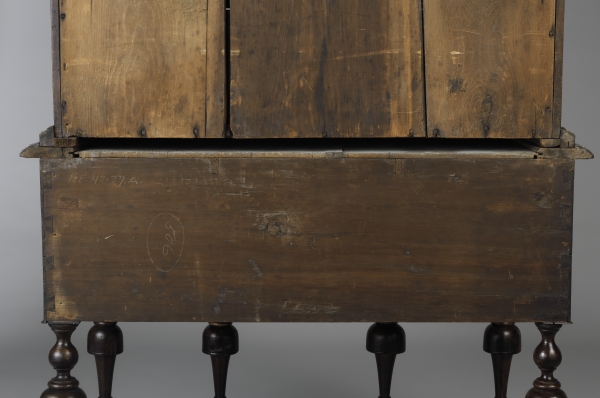
FIG. 7. Back of high chest in fig. 3. The back is dovetailed to the case sides, and a solid top covers the lower case. The side edges of the top originally slipped into grooves in the mid-molding. Over time, the top has shrunk, leaving gaps in these tongue-and-groove joints.
Two other examples of work from this shop underscore the technical proficiency of the cabinetmaker and reveal an ability not only to offer less expensive versions, with a single full-width drawer in the lower section, but also to work within material restrictions. For one chest of drawers (fig. 8), the craftsmen used curly maple for the top, crotch-maple veneer with walnut veneer crossbanding for the sides, and burl maple veneer for the drawer fronts. They then highlighted the figure of the maple on the sides and front with a wash of nitric acid and lamp black; they also simplified the front skirt into a series of simple arcs, which are mirrored in the stretchers. Identical to the first high chest are the drawer construction, dimension of drawer stock, molding profiles, and top boards of the lower section. One notable difference is the use of stepped dustboards in the upper section.25
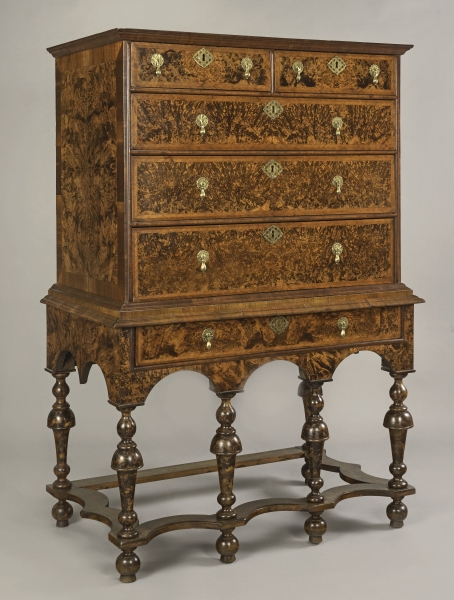
FIG. 8. High chest of drawers, Boston, 1700–1710. Black walnut, maple, birch, white pine; h 58, w 40¼, d 23⅛. Winterthur Museum; Bequest of Henry Francis du Pont (1958.0579).
The second example reveals an even greater reduction in quality (fig. 9). The veneered cornice molding, although small in section, implies that the walnut was used sparingly and that the habit of veneering rather than using solid wood remained strong. But it is the poor quality of the wood that is noteworthy—the gnarly walnut of the sides is severely checked, with noticeable distinction between heartwood and sapwood (fig. 10); in addition, the white pine consists of knotty young wood, aspen rather than maple was used for the turned legs, and plain sawn pine from the outer parts of the log make up the drawer front, resulting in a slightly rounded profile. Such a combination suggests the work of a recently arrived cabinetmaker working when access to decent wood was restricted. Might such an example be dated to the period when trade fluctuations occurred, such as the period of Queen Anne’s War, from 1702 to 1713?
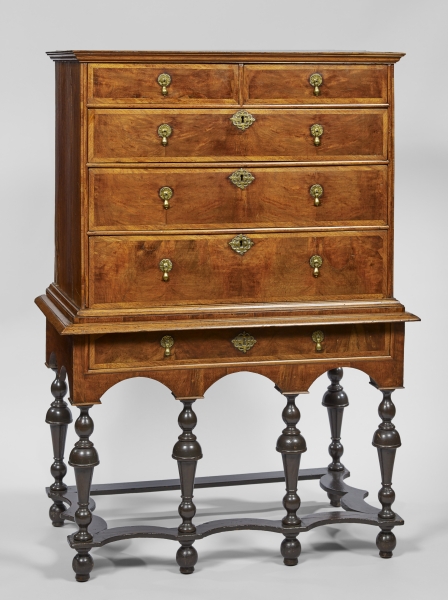
FIG. 9. High chest of drawers, Boston, 1700–1710. Black walnut, aspen, white pine; h 58⅜, w 41⅛, d 237/16. Yale University Art Gallery; Mabel Brady Garvan Collection (1930.2148).
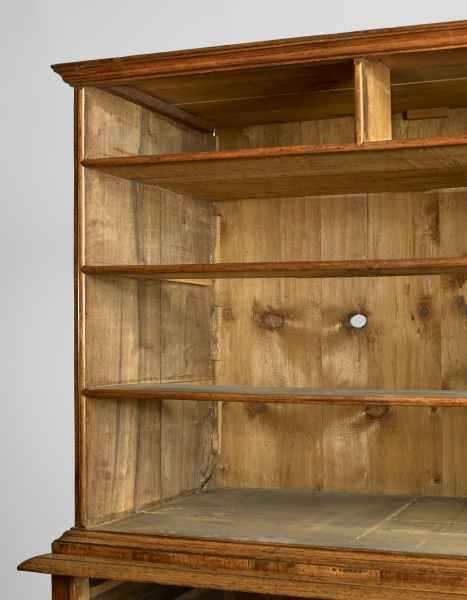
FIG. 10. Interior of high chest in fig. 9, showing the gnarly quality of the walnut sides and the knotty young-growth pine used for the case back.
The shop responsible for these three high chests of drawers could have been owned by a recent immigrant craftsman like John Brocas, who had arrived in Boston by 1696. But since we do not know all the cabinetmakers active during this period, identifying the shop’s connections to 1690s work in England is more instructive in understanding how completely different the technology was from joiner’s work in Boston.26 It is not simply the use of veneer or dovetailed drawers that distinguishes these examples as a new style, but rather an entirely different conceptualization of the carcass as a lightly articulated box with a front-facing void. To achieve this structure, the cabinetmaker depended on sawmills to provide stock boards of consistent thickness so that time was not wasted on re-sawing boards. Instead, the cabinetmaker could quickly dress the boards to a proper thickness (⅜ in., ½ in., or 15/16 in.), then efficiently dovetail them together. Sawn walnut and pine boards replaced riven oak and sawn pine. Within this lighter carcass were drawers of thin white pine that ran on their bottoms; these replaced thick oak or pine side-hung drawers that necessitated additional hanging strips nailed inside the carcass. It is the weight of these differing technologies that is so fundamental, an outgrowth of workmanship as well as style.
A second shop tradition reveals the influence of another English-trained cabinetmaker working perhaps twenty years later.27 The chest-on-chest form first appeared in England around 1710, but an early Boston example features characteristics of Bowett’s transitional second phase cabinetwork, especially the thicker drawer dividers, extensive use of veneer to crossband the carcass sides, drawer fronts with central burl panels framed by herringbone and crossbanding veneer, and a concave sunburst in the lower section (fig. 11).28 A date of about 1730 is consistent with its drawer construction, which features half-blind fronts, strips glued to the side edges of the drawer bottoms, rounded and stepped-down sides, and lip-molded edges (fig. 12). The canted fluted pilasters with grain perpendicular to the flutes, along with the perceived necessity of adding a block behind the lowest drawer front to permit the deep dishing for the sunburst, reflect the habits of a craftsman working with limited wood availability or preferring veneered rather than solid wood carcasses, which began to appear at this time. The use of a keyed dovetail to join the sides of the shallow cornice drawer to the front (fig. 13) and the inclusion of a folding board (or dressing slide) in the midsection also highlight the accomplished technical repertoire of this craftsman and his close ties to English early Georgian examples (fig. 14).
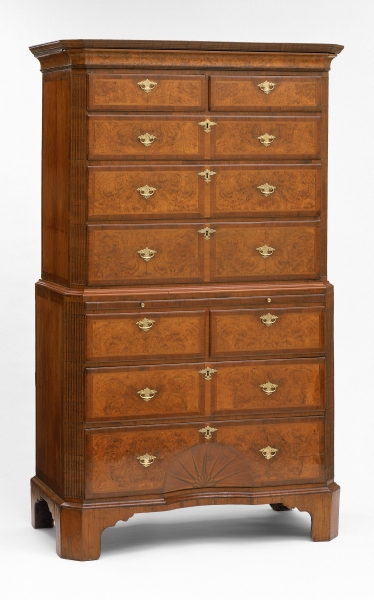
FIG. 11. Chest-on-chest, Boston, ca. 1730. Black walnut, white pine; h 70¾, w 42¼, d 21½. Museum of Fine Arts, Boston; Museum purchase with funds donated by a Friend of the Department of American Decorative Arts and Sculpture and Otis Norcross Fund (1986.240).
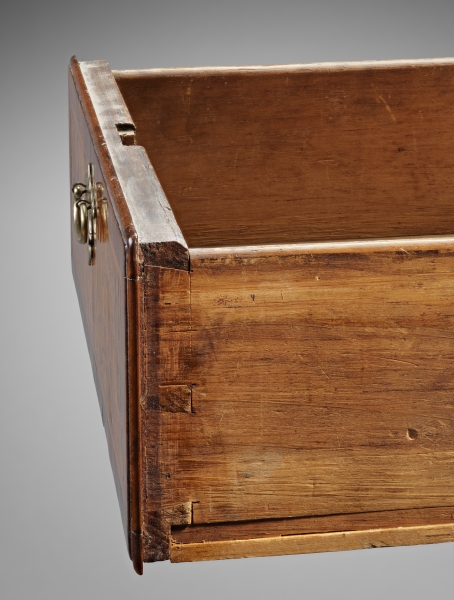
FIG. 12. Dovetailed drawer construction of chest-on-chest in fig. 11. The runners along the outer edge of the bottom are replacements that follow the original construction evidence.
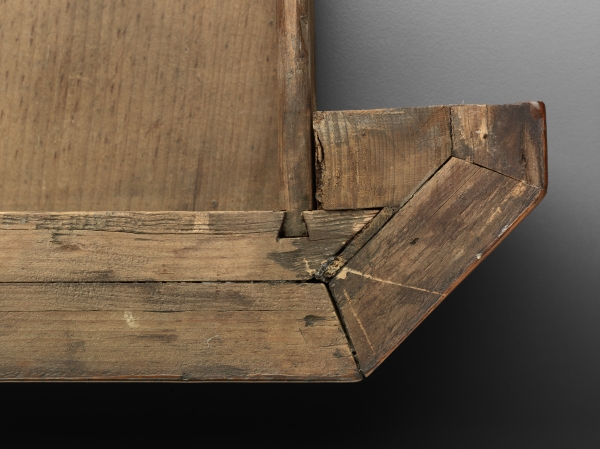
FIG. 13. Cornice drawer of chest-on-chest in fig. 11, looking down at keyed dovetail joining the drawer side to the front.
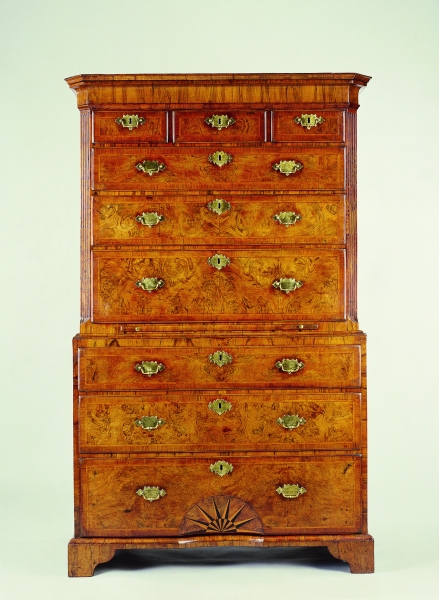
FIG. 14. Chest-on-chest, probably London, 1730–40. European walnut, oak, unidentified softwood; dimensions not recorded. Reindeer Antiques, London.
The high level of craftsmanship can also be found on a secrétaire cabinet with a double-domed cornice made in the same shop (figs. 15, 16).29 The veneer program is the same, as is the use of a concave sunburst, this time in the upper drawers. As in the chest-on-chest, the drawer construction conforms to Bowett’s transitional second phase practice, suggesting a date around 1720. The sheer number of drawers, with all the dovetailing and fitting they required, necessitated a reliable source of dimensioned boards and a skilled shop that could efficiently lay out, cut, and assemble them to create a remarkably light piece of furniture. Further evidence of the shop’s skill can be seen in the dovetailing of the domed drawers (fig. 17). Although the double-dome cornice and secrétaire forms first appeared in London in the 1710s (fig. 18), the Boston example was most likely made in the 1720s but still represented the interaction of a skilled shop with London roots and an ambitious client in Boston who sought a fashionable showpiece.30 The sheer emphasis on expanded, sortable, and retrievable large and midsize drawers also speaks to an increasingly material world, especially in regard to cloth—wool from England, linen from the Low Countries, cotton chintzes from the Coromandel Coast of India, and silk from China and Italy.
FIG. 15. Secrétaire cabinet, Boston, 1720–25. Black walnut, maple, white pine; h 80¼, w 41½, d 22¼. Warner House Association; Gift of Mrs. Arthur D. Hill (1962.1). Photo, Laura Wulf.
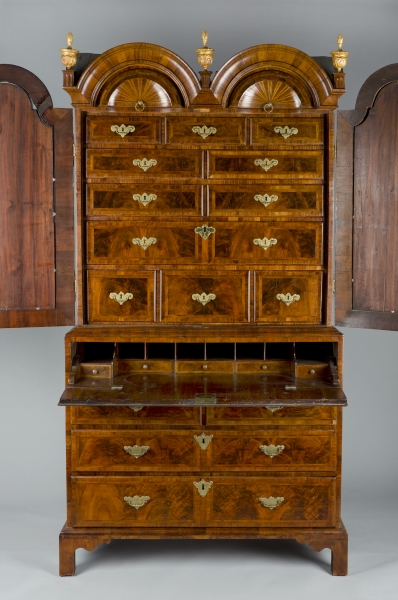
FIG. 16. Interior of upper case and desk drawer of secrétaire cabinet in fig. 15. Photo, Laura Wulf.
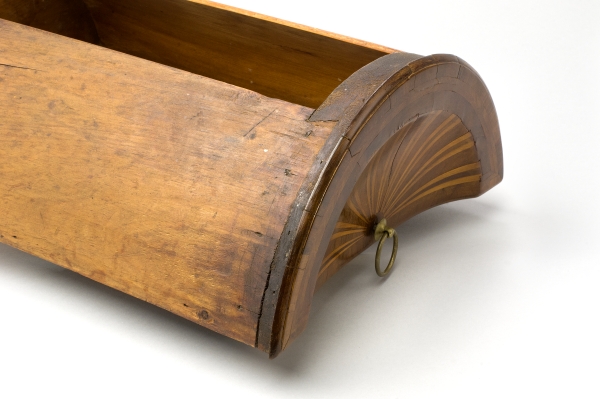
FIG. 17. Domed drawer of secrétaire cabinet in fig. 15, showing the large dovetail that helps secure the curved sides to the drawer front. Photo, Ralph Morang.
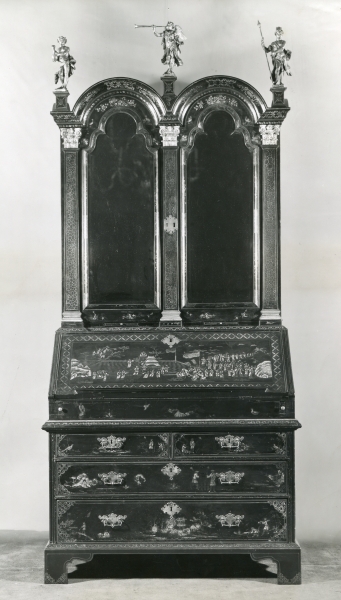
FIG. 18. Desk and bookcase, William Price, London, 1713. Oak, deal; h 101, w 32, d 24½. Winterthur Library; R. W. Symonds Collection, Decorative Arts Photographic Collection (59.3077). “W Price: Maker: 1713” is written in black paint on the bottom of the lower case; this may be the same William Price (1684–1771) who had begun working as a cabinetmaker in Boston by 1714 and later became a well-known print seller and merchant.
In the first quarter of the eighteenth century, Samuel Sewall and his fellow Bostonians faced a variety of choices for case furniture: they could seek work from a local joiner such as William Parkman, patronize the shops of immigrant cabinetmakers John Brocas or William Price or local cabinetmakers like John Damon, purchase imported English examples sold by merchants William Hutchinson or Mr. Bannister, or rely on their own familial contacts in London to buy something for them. The decision to seek items that were of “the newest fashion” and “lately from London” gained prominence in the 1710s, right between the work of the two shops discussed here. Consumers’ interest in such qualities highlights not only an increased emphasis on timely fashion rather than timeless patina or traditionally oriented goods but also a connected history that links Boston and the Atlantic World.31 It was at this time that Boston emerged as an important British port and its local leaders as participants in the world of fashion and style. The same connection also influenced the decisions of tradesmen. During the 1710s, the Boston News-Letter began publishing notices for craftsmen arriving from London, Bristol, and Ireland; indeed, the plummeting standard of living in London that began in 1710 led to the emigration of many artisans.32 While many probably became faceless members of the town’s production, others, like William Price and William Randle, seemed to possess an advantage. The former, an organ master and print seller as well as a cabinetmaker, arrived in 1714; the latter, who had arrived by April 1715, provided furniture decorated in the most up-to-date type of ornamental painting, referred to as japanning. Both merchant-craftsmen set up shop near the statehouse at the head of King Street.33
Two waves of immigrant cabinetmakers, one in the 1690s and a larger one in the 1710s, profoundly affected the material world of Boston, drawing closer connections to contemporary English practice and tastes and then influencing the response of native craftsmen such as Job Coit, who worked with the abundant supplies of walnut and mahogany provided by the port’s thriving coastal trade. This depiction of an increasingly interconnected Atlantic world—wood from the middle colonies and the West Indies, skilled craftsmen from England, japanning inspired by the lacquerwork from East and South Asia via London, and aspiring clients in Boston—makes the first quarter of the eighteenth century a particularly fertile period for study. After considerable political, economic, and cultural flux in the late seventeenth century, a group of merchants with new respectability, shopkeepers, royal officials, and immigrant artisans all expanded their influence in the dynamic town of six thousand, the third most important port in the English empire, trailing only London and Bristol in commercial activity.34 It was at this time that such “new” Bostonians became more interested in the concept of fashion rather than mere suitability; they sought differentiated storage types designed for a growing inventory of goods used and stored extensively, rather than a limited number of goods used and stored intensively. A large group of furnituremakers stepped forth to supply this demand. It is this environment of inventing a new Boston, commercially cosmopolitan and distinct from its providential predecessor, that provides a lens through which to view the politics of case furniture. The success of this foundational time influenced the production and consumption for the remainder of the eighteenth century: the high chest continued to be produced in Boston shops into the 1780s, as did the desk and bookcase with round-topped doors.
Recent literature on the dynamics of the first British empire offers a promising framework to address production and consumption within a connected transatlantic perspective, allowing scholars to historicize and theorize about the flow and deployment of local and imported household objects and material culture. The annulment of the old charter and shifting alliances under the new charter, the influx of English sailors, officials, and money during the military campaigns of 1690 to 1713, and the subsequent expansion of trade in peacetime offered opportunities for Bostonians to use objects to communicate with friends or strangers, signify social distinctions, construct identity, shape social interactions, or fulfill economic exchanges. It is the very production, acquisition, deployment, and circulation of these objects that is key to a full understanding of this era.

1. The letter is transcribed in Samuel Sewall, The Diary of Samuel Sewall, 1674–1729, ed. M. Halsey Thomas, 2 vols. (New York: Farrar, Straus and Giroux, 1973), 2:954. The spelling and punctuation of Sewall’s letter have been retained, but not his original run-on format. Rather, for the reader’s ease in understanding the large volume and variety of things “To be Bought,” each item or group of related items begins on a new line, using Sewall’s semicolons (and, in one case, a period) as a guide.
2. Abbott Lowell Cummings, The Framed Houses of Massachusetts Bay, 1625–1725 (Cambridge: Belknap Press of Harvard University Press, 1979).
3. On the use of a dowry or household furnishings to preserve the memory of a woman’s family of origin, see Laurel Thatcher Ulrich, “Furniture as Social History: Gender, Property, and Memory in the Decorative Arts,” in American Furniture 1995, ed. Luke Beckerdite (Hanover, N.H.: University Press of New England, 1995), 39–68.
4. Sewall, Diary, 2:963. Sewall made many other snide comments about wigs, including his incredulity in June 1701 that Joshua Willard would shave his admirable head of hair to don a wig and his admission in July 1717 that, because Thomas Prince wore a wig to meeting, he “saw him not at all” (1:448–49, 2:858).
5. Many of Sewall’s orders for this period were for textiles for his wife and daughter, including fabric to keep his daughters “out of idleness” and yardage for bed hangings and chair covers, but the requests tended to be for small yardage and extended over twenty years; “Letter Book of Samuel Sewall, 1685–1712,” Collections of the Massachusetts Historical Society, 6th ser., 1 (1886).
6. On the expense of beds and bed hangings, see Abbott Lowell Cummings, Bed Hangings: A Treatise on Fabrics and Styles in the Curtaining of Beds, 1650–1850, 2d ed. (Boston: Society for the Preservation of New England Antiquities, 1994); and Edward S. Cooke Jr., ed., Upholstery in America and Europe from the 17th Century to World War I (New York: W. W. Norton, 1987), 74–78, 167–73.
7. On the English craze for chintz, see Rosemary Crill, Chintz: Indian Textiles for the West (London: V & A Publishing, 2008).
8. See Ann Smart Martin, Reflections: Early American Furniture, Portraits and Silver (Madison, Wis.: Elvehjem Museum of Art, 2003); and John Crowley, The Invention of Comfort: Sensibilities and Desires in Early Modern Britain and Early America (Baltimore: Johns Hopkins University Press, 2001).
9. On the contrasting Dutch culture, see Roderic Blackburn and Ruth Piwonka, Remembrance of Patria: Dutch Arts and Culture in Colonial America, 1609–1776 (Albany, N.Y.: Albany Institute of History and Culture, 1988). The prevalence of impermanent earthenfast buildings with wattle-and-daub chimneys in the Chesapeake is detailed by Cary Carson et al., “Impermanent Architecture in the Southern American Colonies,” Winterthur Portfolio 16, nos. 2/3 (Summer/Autumn 1981): 135–78. On English attitudes toward the land, see William Cronon, Changes in the Land: Indians, Colonists, and the Ecology of New England (New York: Hill and Wang, 1983).
10. See Benno M. Forman, American Seating Furniture, 1630–1730: An Interpretive Catalogue (New York: W. W. Norton, 1988), 243–44; Ledlie Irwin Laughlin, Pewter in America: Its Makers and Their Marks (Boston: Houghton Mifflin, 1940); Boston News-Letter, Jan. 18–25, 1713/14; May 9–16, 1715.
11. See, for example, “Letter Book of Samuel Sewall,” 1:43–44.
12. Most of the Boston News-Letter advertisements merely mention hogsheads or parcels of earthenware, but two references to Dutch tin-glazed tiles appeared: Apr. 23–30, 1716; July 27–Aug, 3, 1719. The tendency to think about earthenware in bulk as hogsheads is also evident in an unknown Boston merchant’s account book dated 1688–94, call no. P-407, at the Massachusetts Historical Society. Earthenware could have been common lead-glazed Devon ware or tin-glazed earthenwares produced in London.
13. See James W. Bradley, Archaeology of the Bostonian Hotel Site (Boston: Massachusetts Historical Commission, 1983); and Unearthing New England’s Past: The Ceramic Evidence (Lexington, Mass.: Scottish Rite Masonic Museum of Our National Heritage, 1984).
14. The best sources on local silver production are Patricia E. Kane et al., Colonial Massachusetts Silversmiths and Jewelers: A Biographical Dictionary Based on the Notes of Francis Hill Bigelow and John Marshall Phillips (New Haven: Yale University Art Gallery, 1998); and Barbara McLean Ward, “Boston Goldsmiths, 1690–1730,” in The Craftsman in Early America, ed. Ian Quimby (New York: W. W. Norton for the Henry Francis du Pont Winterthur Museum, 1984), 126–57.
15. Boston News-Letter, May 10–17, 1714; June 2–9, 1718.
16. Boston News-Letter, July 23–30, 1716; Sept. 15–22, 1718.
17. See Myrna Kaye, “Eighteenth-Century Boston Furniture Craftsmen,” in Boston Furniture of the Eighteenth Century: A Conference Held by the Colonial Society of Massachusetts, 11 and 12 May 1972, ed. Walter Muir Whitehill, Jonathan L. Fairbanks, and Brock Jobe, Publications of the Colonial Society of Massachusetts, vol. 48 (Boston: Colonial Society of Massachusetts, 1974), 267–302.
18. Sewall, Diary, 2:765.
19. In particular, see Benno M. Forman, “Boston Furniture Craftsmen, 1630–1730,” undated manuscript, author’s collection; Forman, “Urban Aspects of Massachusetts Furniture in the Late Seventeenth Century,” in Country Cabinetwork and Simple City Furniture, ed. John D. Morse (Charlottesville: University Press of Virginia, 1970), 1–28; and Forman, American Seating Furniture, esp. 229–356.
20. Benno M. Forman, “The Chest of Drawers in America, 1635–1730: The Origins of the Joined Chest of Drawers,” Winterthur Portfolio 20, no. 1 (Spring 1985): 1–30; and Forman, “Furniture for Dressing in Early America, 1650–1730: Forms, Nomenclature, and Use,” Winterthur Portfolio 22, nos. 2/3 (Summer/Autumn 1987): 149–64. See also Robert F. Trent, “The Chest of Drawers in America, 1635–1730: A Postscript,” Winterthur Portfolio 20, no. 1 (Spring 1985): 31–48.
21. Adam Bowett, English Furniture, 1660–1714: From Charles II to Queen Anne (Woodbridge, Suffolk: Antique Collectors’ Club, 2002); and Bowett, Early Georgian Furniture, 1715–1740 (Woodbridge, Suffolk: Antique Collectors’ Club, 2009).
22. Forman distinguishes between earlier turned-rear-stile cane chairs, usually with symmetrical medial stretchers, and later cane chairs that have molded rear stiles and a medial stretcher placed closer to the front legs; American Seating Furniture, 234–41.
23. Bowett, English Furniture, 49–53.
24. Ibid., 202–11; and Bowett, Early Georgian Furniture, 54–64.
25. The first example featured dustboards about 7 in. deep, with drawer runners nailed with T-headed nails behind them. The second and third examples had stepped dustboards. Drawer supports in the lower section also varied. The first example had center runners supporting the drawers, whereas the second and third examples had drawer supports under the sides of each drawer. Yet another difference is the turning of the legs: it is far crisper on the first example with curly maple stock; the birch and aspen legs of examples 2 and 3 were not as well articulated.
26. In combing through records, Forman and Trent recorded twelve cabinetmakers working in Boston between 1696 and 1726: immigrant craftsmen John Brocas, William Howell, William Price, William Robinson, John Jackson, and someone whose last name was Andrews; and native craftsmen Job Coit, George Thomas, John Maverick, James Mattocks, Fifield Jackson, and John Damon.
27. For an earlier discussion of this shop, see Edward S. Cooke Jr., “The Warland Chest: Early Georgian Furniture in Boston,” Maine Antique Digest 15, no. 3 (Mar. 1987): C10–C13.
28. Bowett, Early Georgian Furniture, 54–81.
29. See Gerald W. R. Ward, The Cabinetmaker and the Carver: Boston Furniture from Private Collections (Boston: Massachusetts Historical Society, 2013), 24.
30. Bowett, Early Georgian Furniture, 222–26.
31. On the rise of fashion over patina, see Grant McCracken, Culture and Consumption: New Approaches to the Symbolic Character of Consumer Goods and Activities (Bloomington: Indiana University Press, 1988).
32. Elizabeth Gilbay, Wages in Eighteenth-Century England (Cambridge: Harvard University Press, 1934); and Jeremy Boulton, “Wage Labour in Seventeenth-Century London,” Economic History Review 49, no. 2 (May 1996): 268–90.
33. On Price, see Forman, “Boston Furniture Craftsmen”; and Whitehill, Fairbanks, and Jobe, Boston Furniture of the Eighteenth Century. On Randle, see Richard Randall, “William Randall, Boston Japanner,” Antiques 105, no. 5 (May 1974): 1127–31. Randle sold looking glasses, cabinets, escrutoires, chests of drawers, tables, buffets, writing desks, and bookcases with desks; Boston News-Letter, Apr. 25–May 1, 1715.
34. Richard Johnson, Adjustment to Empire: The New England Colonies, 1675–1715 (Leicester: Leicester University Press, 1981), 269–74.

